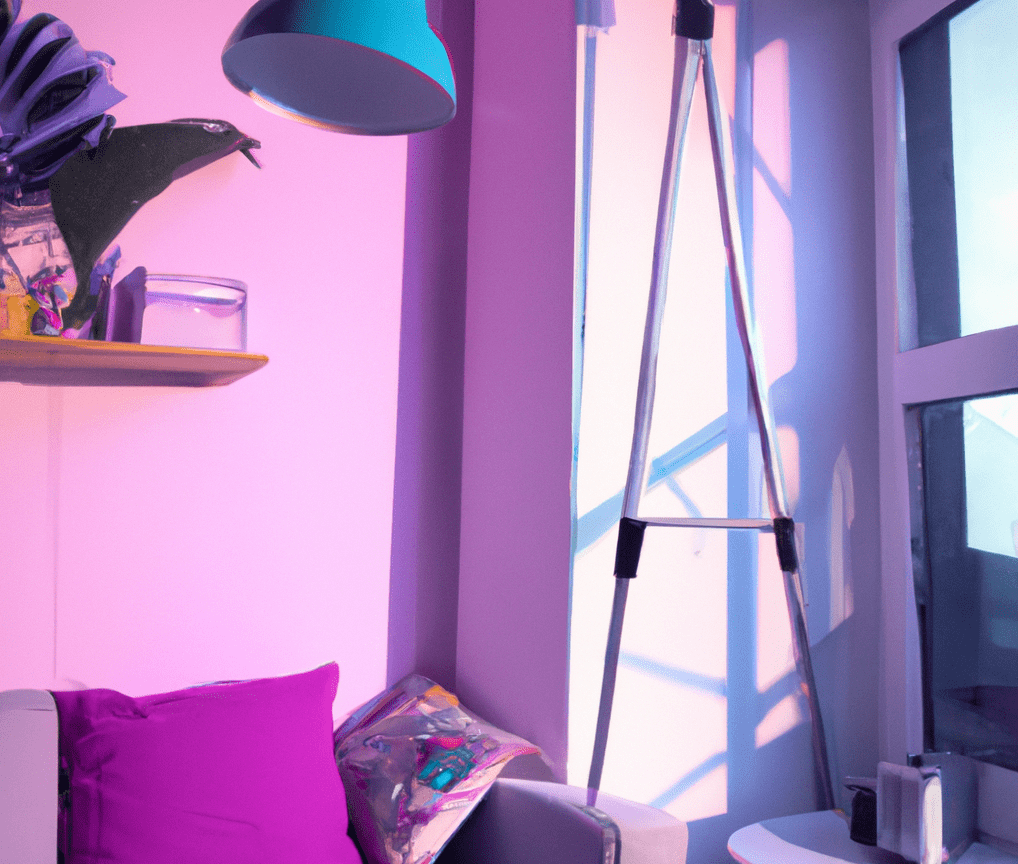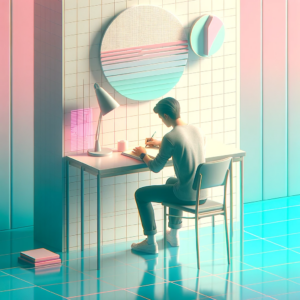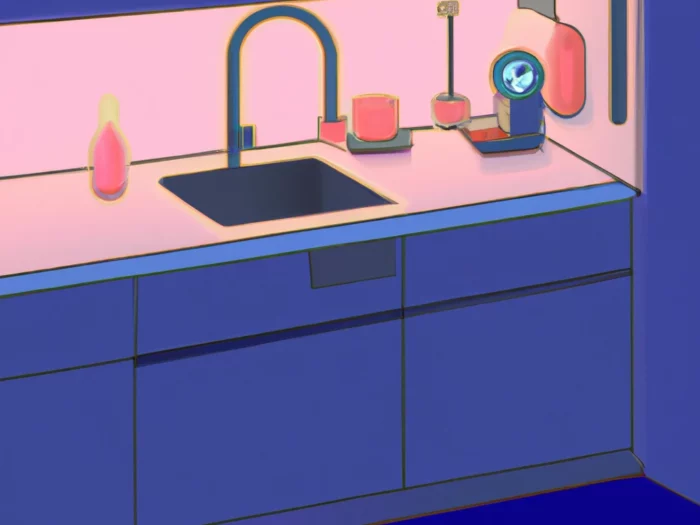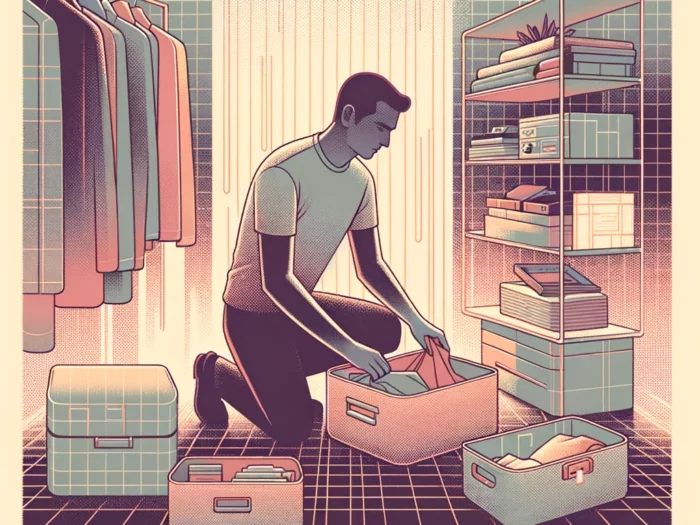In the modern world, where consumerism often reigns supreme, there exists a countercurrent that champions simplicity and intentionality: minimalism. This philosophy, which advocates for living with less and cherishing the essentials, has found its way into various aspects of our lives, including home decorating. The concept of a minimalist home is not about stark, white rooms devoid of personality or warmth. Instead, it’s about creating a space that breathes, one that is free of clutter and filled with items that serve a purpose and bring joy.
I, the author, may not live in what you’d traditionally call a minimalist home. However, I’ve embraced the principles of minimalist home decorating, striving to keep my house as simple and clutter-free as possible. This isn’t always a perfect system, especially with a lively 10-year-old girl in the mix, but it’s a journey that has brought me peace and satisfaction. In this post, I’ll share 12 steps to creating a minimalist home interior, drawing from my personal experiences and insights.
How My Minimalist Home Journey Started
Creating a home that is very simple and free of excess has been a long journey. When I was younger, I lived with very little because I had little money. In my 30s, I earned more money. I started living a bit excessively. In my 40s, I began to consider needs vs. wants. I started studying minimalism and small-space living. It’s all led to where I am today.
If you’d like your home to be more peaceful, practicing minimalism is a good place to start. Let’s explore 12 steps to creating a minimalist home. Just as an artist starts a painting with a blank canvas, let’s start with an empty house. Imagine you’re just moving into a new 1000-square-foot home.
Step 1: Studying the Space
I have always loved an empty house. It’s so full of space and light, a tangible representation of potential. When you move into a new home, take the time to study the space. Walk through each room, noting the layout, the flow of light, the nooks and corners. Consider what will fit without creating a claustrophobic feel.
Understanding the space is crucial in minimalist house design. It’s about knowing your limitations and working within them. For instance, if a room is small, cramming it with large furniture will make it feel even smaller. On the other hand, carefully selected pieces that fit the scale of the room can make it feel spacious and inviting.
Studying the space also involves visualizing how you’ll use each room. Will the living room also serve as a workspace? Will the dining area double as a homework station for your kids? Considering these factors will help you plan your space effectively, ensuring that it serves your needs without feeling cluttered or chaotic.
Step 2: Choosing Colors
The colors you choose for your home play a significant role in shaping its atmosphere and mood. Dark colors can make a space feel smaller and more enclosed, while light colors can create an illusion of spaciousness and openness. In minimalist house design, it’s common to lean towards the latter.
I’ve always believed that a dark home does not feel open. It can feel cozy, yes, but it can also feel oppressive, especially in smaller spaces. If the colors in your new home are dark or overly bright, you might want to consider painting.
Light colors, particularly whites and light Earth tones, are excellent choices for a minimalist home. They reflect light, enhancing the sense of space. They also serve as a neutral backdrop, allowing your furniture and decor to take center stage.
But choosing light colors doesn’t mean your home has to be devoid of color. You can introduce color through your furniture, artwork, or even a feature wall. The key is to balance it with plenty of white or neutral space, maintaining a sense of simplicity and calm.
Step 3: Considering Essentials
One of the cornerstones of minimalist house design is the concept of essentialism. It’s about identifying what you truly need and letting go of the rest. This principle applies to everything in your home, from your furniture to your decor.
When furnishing your home, ask yourself: How many furnishings do I really need? Why do I need more than a table and chairs in a dining room? In the bedrooms, is anything more than a bed, a dresser, and a nightstand too much?Stick to the basics.
These questions might seem extreme, but they’re meant to challenge the conventional notions of what a home should contain. They encourage you to think critically about each item before bringing it into your space, ensuring that everything you own serves a purpose and adds value to your life.
Step 4: Going Small
In our society, bigger is often equated with better. We’re told that a king-sized bed is more luxurious, that a large sofa is more comfortable. But in a minimalist home, smaller can often be better.
Don’t cram a king-sized bed into a queen-sized bedroom. It might seem luxurious, but if it leaves little room for anything else, it’s not serving its purpose. Smaller pieces of furniture can create more room, making your space feel more spacious and comfortable.
When I was living in a 650 square-foot home, I slept on a twin-sized bed. It might have been smaller than a typical bed, but it made my room much more spacious. I had room to move and breathe, which made the space feel more comfortable and relaxing.
Remember, in minimalist house design, the goal is not to fill up space but to create it. By choosing smaller, more proportionate furniture, you can create a home that feels open, airy, and inviting.
Step 5: Limiting Collections
Collections, whether they’re books, CDs, or any other items, can quickly take up space and create clutter. As someone who loves books and music, I understand the joy of owning a large collection. At one time, I had over 1000 CDs and books. But over time, I’ve learned that collections can also become a burden.
Collections take up space. They create clutter. And often, we end up owning more than we can truly appreciate. I’ve learned to let go of my collections, keeping only my favorite titles and limiting books and CDs to a couple of shelves. I trade in old books and CDs several times a year, which not only helps keep my collections manageable but also allows me to continuously refresh them.
Limiting collections is not about deprivation. It’s about curating your possessions, keeping only what you truly love and use. It’s about creating space for new experiences, new knowledge, and new memories. In the next sections, we’ll continue exploring the steps to creating a minimalist home, discussing everything from decor to storage solutions. Stay tuned as we continue this journey towards simplicity and intentionality.
Step 6: Simple Decor
Decor plays a significant role in defining the character of your home. It adds personality, warmth, and interest to your space. However, in a minimalist home, the approach to decor is different. It’s not about filling every surface with trinkets or covering every wall with artwork. Instead, it’s about simplicity and intentionality.
I’ve never been a fan of coffee tables. They tend to clutter the center of the room, becoming a catch-all for miscellaneous items. Instead, I prefer a few bookcases and end tables, which provide storage without overwhelming the space.
If you want your home to feel open and spacious, consider limiting the decor on any given surface to one or two simple pieces. This could be a vase of fresh flowers on a dining table or a single piece of artwork on a wall. The key is to create focal points that draw the eye without creating visual clutter.
Step 7: Blank Walls
Have you ever been in a home where the walls were covered with art or family pictures? While it might reflect the homeowner’s personality and memories, it can also feel too busy, especially in a minimalist home.
I keep one wall completely bare in almost every room. It might seem stark, but it creates a sense of calm and allows the room’s other elements to shine. On the remaining walls, I only hang one, maybe two pieces of art. This approach not only reduces visual clutter but also makes each piece of art more impactful.
Remember, blank space in a minimalist home is not empty space. It’s breathing space. It’s a visual rest that allows the room’s other elements to stand out.
Step 8: Clear Floors
The floor is often overlooked in home design, but it plays a crucial role in creating a sense of space. A cluttered floor can make a room feel cramped and chaotic, while clear floors can create a sense of spaciousness.
Arrange your furniture in a way that creates sufficient walking space. Avoid the temptation to fill every corner with furniture or decor. Keep clutter off the floors. Clear and open floors not only make a room feel larger, but they also make it easier to move around.
I’m not a big fan of rugs, especially in smaller spaces. While they can add warmth and texture, they can also make a room feel smaller. If you do choose to use rugs, consider their size and placement carefully to ensure they enhance rather than detract from the sense of space.
Step 9: Smart Storage
Storage is a critical aspect of maintaining a minimalist home. Without adequate storage, clutter can quickly accumulate, negating the benefits of a minimalist design.
Store less-used items away. I use large plastic bins to organize things that need to be stored in the garage or basement. For smaller items that get stored in cupboards or drawers, I use smaller bins and trays. This approach not only keeps my home clutter-free but also makes it easier to find things when I need them.
Smart storage is not about hiding clutter; it’s about organizing your possessions in a way that makes your home more functional and enjoyable. It’s about creating a place for everything so that everything can be in its place.
Step 10: Buy Less
One of the main reasons we end up with clutter is that we often buy more than we need. This is especially true when we move into a new home. Our first impulse is often to fill up the empty space. “That corner looks bare,” we might say, and rush out to buy something to fill it. But in a minimalist home, empty space is not something to be filled. It’s something to be cherished.
Resist the urge to immediately fill up your new home. Instead, give it time. Live in the space, get to know it. You might find that you don’t need as much as you thought you did. And when you do buy something, think essential. Ask yourself if the item serves a purpose or brings you joy. If it doesn’t, it probably doesn’t belong in your home.
Remember, in a minimalist home, less is more. Each item you own should add value to your life, whether it’s functional, beautiful, or both. By buying less, you’re not only reducing clutter but also making room for what truly matters.
Step 11: Give More
Another way to create a minimalist home is to give away the things you don’t use. This not only reduces clutter but also ensures that the items you no longer need can be of use to someone else. Give the rest away.
When you’re unpacking in a new home or decluttering your current one, consider your true needs. Keep the absolute necessities. Give the rest away. You might be surprised by how much you own that you don’t actually need or use.
Giving more is not about deprivation. It’s about recognizing that owning more than we need can be a burden rather than a blessing. It’s about making room for what truly adds value to our lives.
Step 12: Put It Away
Clutter often starts when we don’t put things away. We come home after a long day, drop our things on the counter or the floor, and before we know it, clutter has accumulated.
In a minimalist home, everything should have a place. And everything should be put in its place as soon as you’re done using it. This might seem like a small habit, but it can make a big difference in maintaining a clutter-free home.
Remember, a clutter-free home is not just about aesthetics. It’s about creating a space that allows you to relax, focus, and live more intentionally. It’s about creating a home that supports rather than hinders your lifestyle.
Keep It Clean
Minimalists keep their homes clutter-free and clean. If you want some great cleaning tips, go see The Cleanup Queen, Wendy Williams on Facebook.
Check out this simple and beautiful slideshow presentation:
12 step minimalist home from Dan Erickson
Practice these 12 steps to creating a minimalist home interior and you’ll find more peace in life. Keeping life simple leads to happiness and productivity. Clutter leads to chaos and anxiety. If you’d like to learn more about the connections between happiness, simplicity, and productivity, check out my free ebook:









